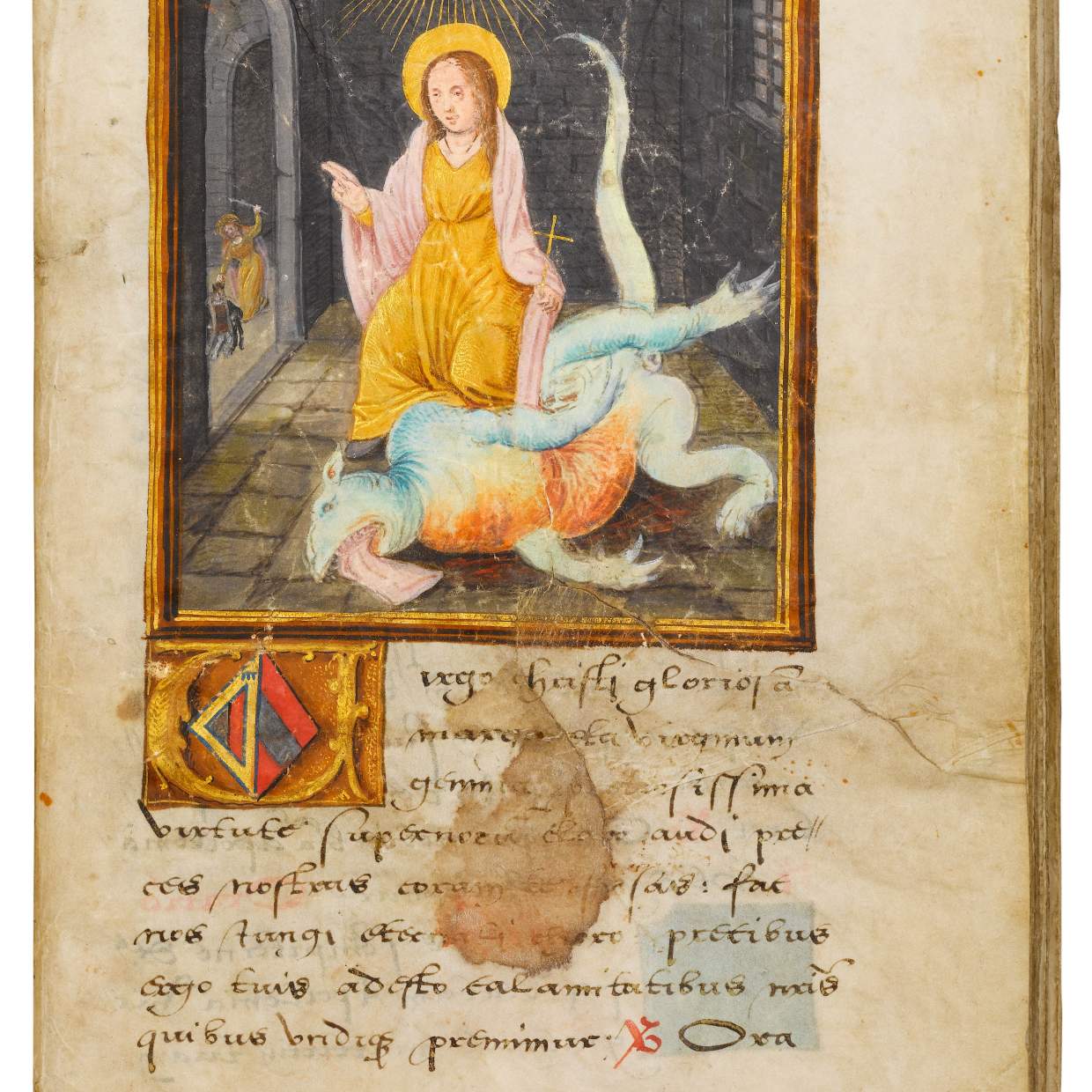-
Manuscript Mysteries
Dr. Jörn Günther Rare Books AG holds items that are centuries old, books and manuscripts that have been studied and passed from person to person over many generations. However, no matter how old an item is, it can continue to hold mystery additional to its artistic value. Just a few of these puzzling mysteries are here below... maybe you have the answers we've been looking for!
-

The Roman soldier
On this leaf of an illuminated Antiphonal manuscript from Bologna, an enigma lies. In the historiated initial D, its colours dark and brooding, there is a large soldier. He towers above the landscape behind him, an almost surrealist figure who seems quite incongruous with the text. In the chant, God tells Noah that he will destroy all living creatures on earth, and thus Noah should build an ark. The story is recognizably from Genesis 6, making the appearance of this soldier even more peculiar.
Taking a closer look at him, this figure asks more questions than he answers. His identity is suggested by his burgundy-tinted skin, perhaps a nod towards a darker complexion. His shoes, known as caligae, military shoes or sandals, are the kind worn by Roman soldiers. He handles a cudgel, not a sword or a spear, and his size could suggest a reference to the giants roaming the earth in Genesis 6:4. The truth is, no-one is really sure: these interpretations don’t seem to be represented here.
Read more about this soldier here.
-
Curious Coats of Arms
The puzzle behind this wonderful Book of Hours is its patron, with several intriguing clues but no definite answers. The miniature pictured, of St. Margaret emerging from a dragon, suggests that the person the book was made for was a noble woman whose Christian name was Margaret. The French rubrics accompanying the Seven Sorrows of the Virgin suggest a French speaking patron. Finally, on two pages there can be found two separate coats of arms, likely representing a husband and wife, both yet to be identified.
Though the manuscript is a typical respresentative of a Book of Hours, there is something curious about the arrangement of the texts: following the gospel sequence that opens the text, the book continues with the Passion of the Christ according to St. John, and also includes the Seven Sorrows of the Virgin and many Marian prayers. These aspects provide additional clues, implying a deeply Catholic patron. The coats of arms remain a mystery, however: “parti: au 1, parti d’argent et de gueules, à la bordure d’or chargée d’un lambel d’azur (?)” (presumably from the oldest son of a nobleman); “au 2, de gueules à la bande d’argent” (presumably from his wife). Read more about this Book of Hours here

-

A Grizzly Murder
This codex, consisting of homilies composed by Johannes Chrysostomos and Gregorius I, offers a dramatic insight into the church circles of 14th and 15th century Austria. With delicate pen-drawings by Nicolaus Nicolai, a vicar from Piesting who dates his work between 1407 and 1408, this selection of homilies appears to be a personal object, intended for study and private worship.
However, flyleaves used in the front and back of the book, bound with remarkable cuir-ciselée chained binding, spark the start of an interesting, and unexpectedly gruesome, story. They detail a legal case against Konrad Wallingraben, who was excommunicated from the monastery of St. Michelsberg in 1390. He had been found guilty of seizing the parish of Nicolai illegally, and in the face of the law continued to read Mass at Piesting, leaving Nicolai perhaps copying books to raise his commandeered income.
After the manuscript was completed in 1408, a note was added to say that Nicolai had been murdered by the knife of a rustibaldus (rusticus and ribaldus combined), presumably in an act of grizzly revenge. Read more about the Homilies here.
-
Can you figure them out? Follow our social media for more!

Manuscript Mysteries
Can you figure out these puzzling enigmas?


